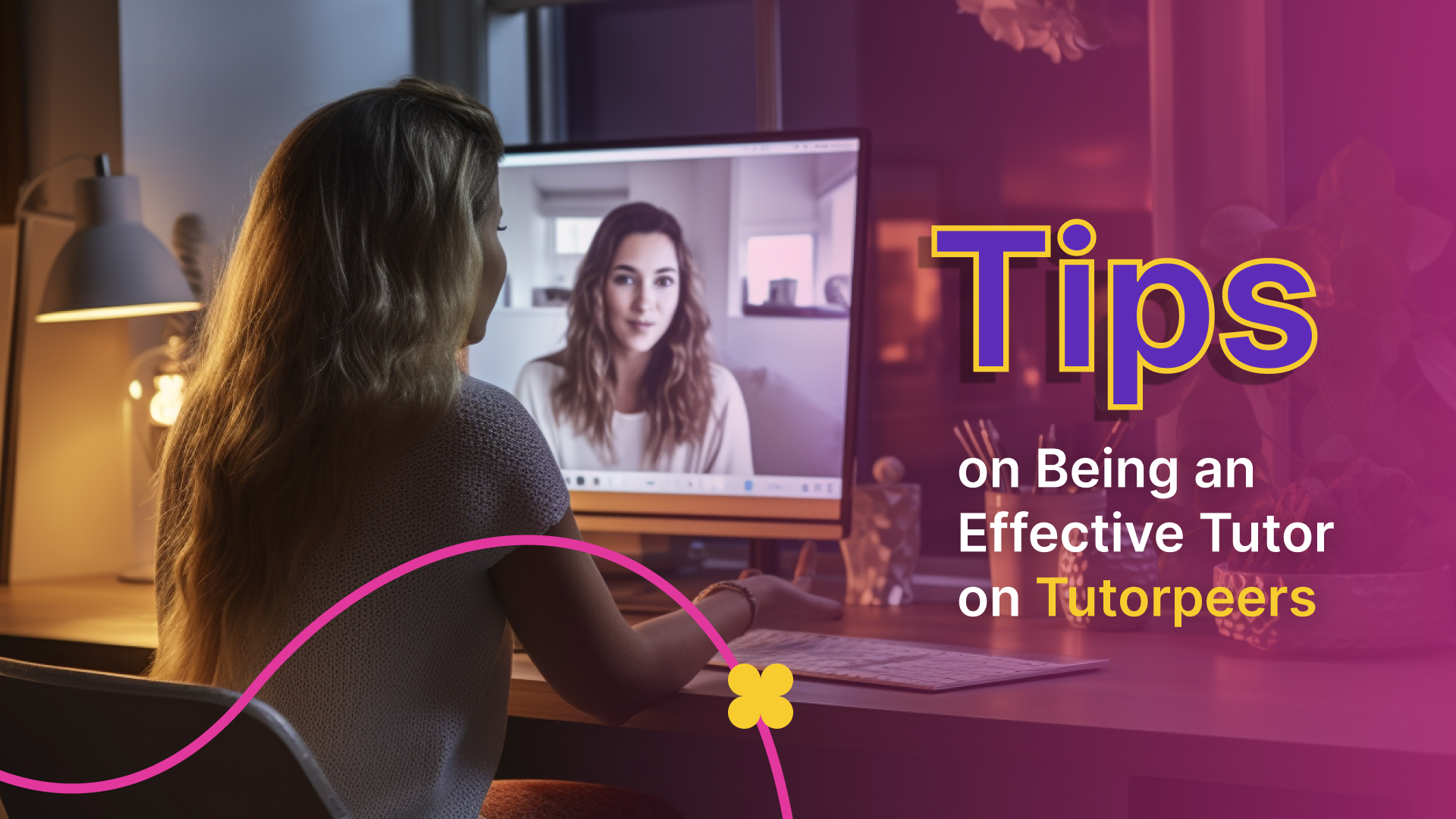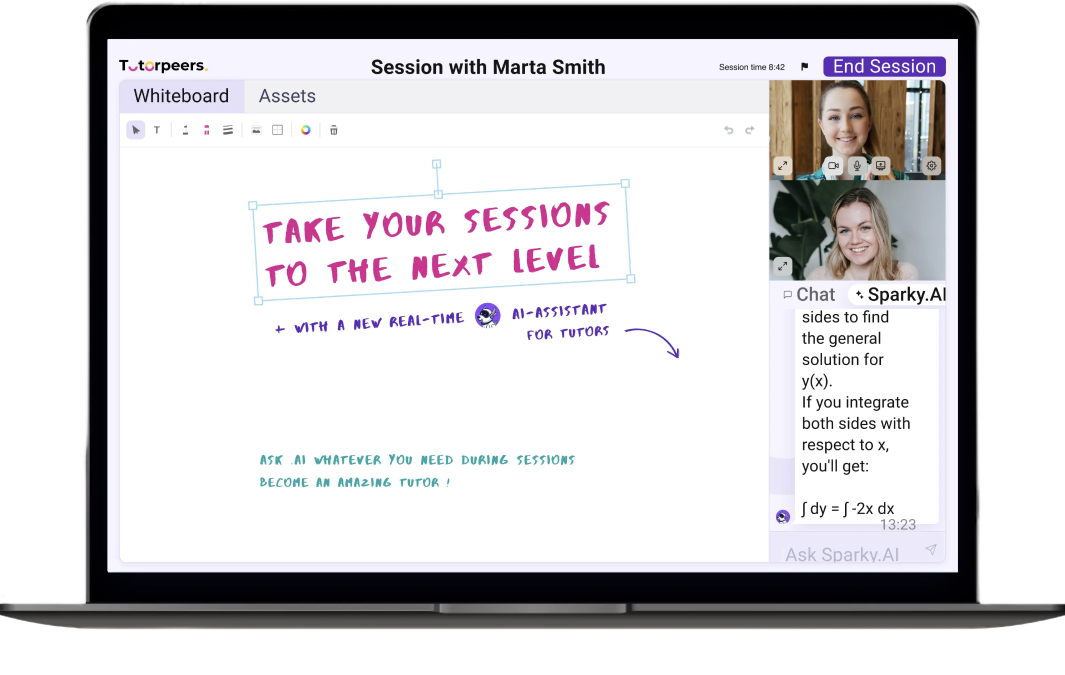Role of Parents in a Child’s Education
Ever wondered how you, as a parent, can make a real difference in your child's education? Dive into our complete guide and become the superstar parent your child needs!
Read more
In online tutoring, communication is more than just a skill—it's the bridge that connects knowledge to understanding. Picture this: a student, eyes wide with curiosity, eager to grasp a concept just out of reach. Now, imagine the role of a tutor, not just as an educator, but as a communicator, an enabler who turns confusion into clarity. This is the essence of effective tutoring on Tutorpeers.
But how does one cross this bridge? It starts with mastering the art of active listening, a skill that lets tutors truly hear and understand their students' needs and challenges. It's about breaking down complex ideas into simpler, digestible chunks, ensuring that explanations are as clear as they are comprehensive. Equally important is the creation of an interactive learning environment, one that encourages students to engage, ask questions, and actively participate in their learning journey.
In this article, we'll dive into these crucial aspects of tutoring. We're here to guide you from honing your active listening abilities to perfecting the art of clear explanation and fostering a learning space that buzzes with interaction and engagement. These tips are more than just guidelines; they're stepping stones to becoming the tutor every student looks forward to learning from. So, let's transform the tutoring experience on Tutorpeers into an enriching and fulfilling adventure for you and your students.

Active listening is the cornerstone of effective communication in tutoring. It's about fully concentrating, understanding, responding, and remembering the student's words. It's a skill that goes beyond just hearing; it's about interpreting the emotions and intentions behind them. For tutors on Tutorpeers, mastering this skill can transform the entire learning experience and allow for a great learner experience, leading to more positive feedback and, ultimately, more bookings!
Active listening allows tutors to identify and address their students' specific challenges. It builds trust and rapport, creating a comfortable environment where students feel heard and understood. This is particularly crucial in an online setting where non-verbal cues are less visible.
By integrating these active listening techniques, tutors on Tutorpeers can greatly enhance their effectiveness. It helps tailor the sessions to each student’s unique needs, ensuring a more personalized and impactful learning experience.

Clear and effective communication is the linchpin of successful tutoring. It's not just about what you say but how you say it. For tutors on Tutorpeers, mastering the art of clear explanation is essential for conveying complex concepts in a way that resonates with their students.
Clarity in explanations bridges the gap between misunderstanding and comprehension. It's about making complex ideas accessible and relatable. Clear explanations can boost a student's confidence, encourage curiosity, and foster a deeper understanding of the subject matter.
By applying these techniques, tutors on Tutorpeers can enhance their ability to explain concepts clearly and effectively. This helps students grasp challenging subjects and builds their confidence and enthusiasm for learning.
Interaction and engagement are key to making learning not just effective but also enjoyable. In the realm of online tutoring on Tutorpeers, fostering an interactive learning environment is vital for keeping students motivated and involved in their educational journey.
An interactive learning environment encourages students to be active participants in their education. It helps maintain their interest and attention, making the learning process more dynamic and less monotonous. Especially in a virtual setting, interactive methods can greatly enhance the student’s learning experience.
By implementing these strategies, tutors on Tutorpeers can create a more vibrant and interactive learning environment. This not only aids in better retention of information but also makes the learning process a more enjoyable and fulfilling experience for students.

To be an effective tutor on Tutorpeers goes beyond just mastering teaching techniques; it's also about being adept with the platform's tools and features. These features are designed to enrich the tutoring sessions, making them more interactive, resourceful, and efficient.
Understanding and utilizing the Tutorpeers platform's capabilities can significantly improve the quality of your tutoring sessions. These features are tailored to support and enhance the learning and teaching process.

By effectively utilizing these platform features, tutors on Tutorpeers can greatly enhance the learning experience. It's not just about what you teach but also how you use the available tools to deliver your knowledge most effectively.
In this journey through the art of effective tutoring on Tutorpeers, we've explored several key facets: the power of active listening, the clarity of explanations, the vibrancy of an interactive learning environment, and the adept use of the platform's features. Each component is pivotal in transforming the tutoring experience from good to exceptional.
Active listening creates a foundation of trust and understanding, clear explanations turn complexity into clarity, an interactive environment keeps learning dynamic, and the smart use of Tutorpeers' tools brings efficiency and innovation to each session. Together, they form a comprehensive approach to tutoring that not only enhances the learning experience for students but also makes the teaching process more fulfilling for tutors.
As you apply these tips and techniques in your tutoring sessions, remember that each interaction with a student is an opportunity to make a lasting impact. By combining your knowledge, skills, and the capabilities of the Tutorpeers platform, you are not just imparting knowledge but also shaping the future of learning.
Let this guide be your companion as a Tutorpeers tutor, where every session is a step towards becoming the educator that every learner seeks and cherishes. Happy tutoring!
A: Maintain focused attention on your student, using nods and verbal affirmations. Paraphrase their questions or concerns to show understanding, and avoid multitasking during the session.
A: Use analogies and metaphors, break down concepts into simpler steps, use visual aids like diagrams or charts, and regularly check for understanding by asking the student to summarize the concept in their own words.
A: Incorporate multimedia tools like videos or quizzes, encourage questions and discussions, use real-world examples, and conduct interactive exercises or games relevant to the subject.
A: For subjects like math, use the drawboard to solve equations step-by-step visually. For science, draw diagrams to explain concepts like a leaf's anatomy or a molecule's structure.
A: Use the AI helper for quick information retrieval, problem-solving assistance, or to get teaching method suggestions. It can save time and enhance the session's efficiency, allowing you to focus more on the student.
Ever wondered how you, as a parent, can make a real difference in your child's education? Dive into our complete guide and become the superstar parent your child needs!
Read moreNavigate the process of choosing your college essay topic with our comprehensive guide. Understand the significance of your topic, learn how to brainstorm ideas, evaluate potential topics, and make your final decision. Plus, explore real examples of successful college essay topics.
Read moreDiscover the top time management techniques for teens. This guide covers everything from goal-setting to tech tools, helping teens easily navigate their busy lives.
Read more